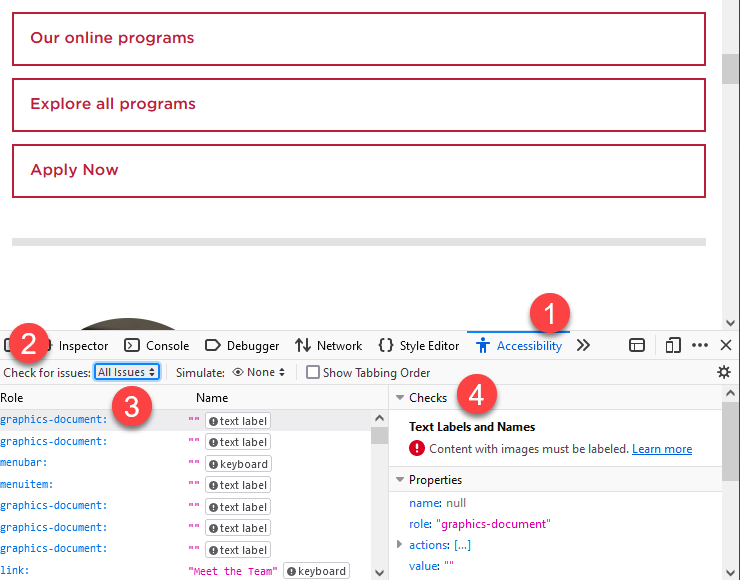External Sources
What are external sources?
Any site or source that you link out to is considered an external source. For example, if you have students reviewing an article for an assignment and you share a link to the website that houses the article, that would be considered an external source. Moreover, any publisher's materials are considered external sources.
Why is it important to check the accessibility of external sites and sources?
All students should have access to every course material, including the publisher's powerpoints and information you link out to. Most well-known companies and websites will meet the current accessibility standards; however, small or personal websites might not always give as much attention to the level of accessibility of their content.
How can I check the accessibility of other sites?
Both Firefox and Google Chrome make it simple to access the Inspector tool. Right-click on any part of the web page you wish to evaluate and select 'Inspect.' A separate pane will open displaying the HTML code behind the webpage content.

Chrome users:
-
- Select the “Lighthouse” tab within the Inspector.
- From the list of categories make sure to check “Accessibility” and uncheck the other options.
- Select the “Analyze Page Load” button to start the accessibility checker.
- The accessibility score will appear at the top of the inspector with a list of accessibility issues directly underneath.
- Click the chevron next to each flagged issue to read a detailed report about the issue.


Firefox users:
-
- Select the “Accessibility” tab within the Inspector tool.
- Locate and select ‘” Check for issues”.
- Choose “All Issues”.
- All flagged issues will appear in the “Checks” section of the inspector.

Responding to Accessibility Issues:
You may not be able to alter a third-party website directly, but there are several actions you can take:
- Find Alternatives: Seek out resources that provide the same information but are more accessible.
- Create Accessible Content: If the resource is distinctive, consider crafting an accessible summary or guide for your students and referencing the external source.
- Communicate: Reach out to the website's owner to notify them of the issues and encourage improvements.
Emphasizing accessibility is not only our legal duty—it is our ethical responsibility. Together, we can strive to create an inclusive learning environment, and your diligence in this endeavor helps make that goal possible.